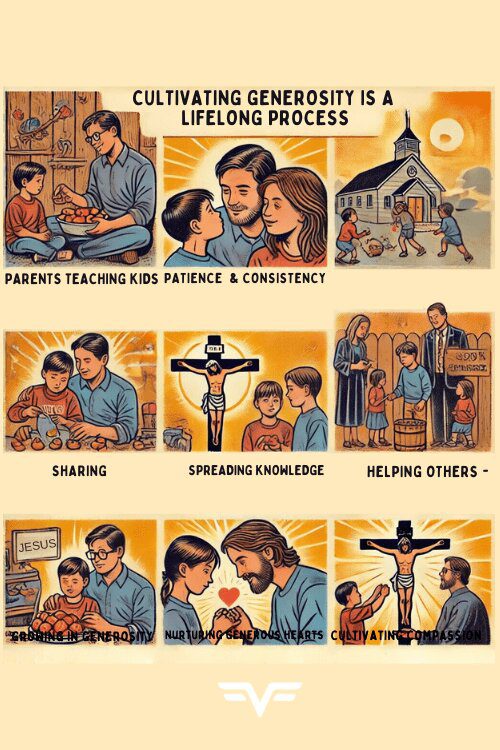Nurturing tomorrow's heroes Today!
Character Chronicles
What Butterflies Teach Us
Index
Introduction
The Beauty of Transformation
From humble caterpillar to magnificent butterfly—is there any transformation in nature more awe-inspiring? God has given us a perfect picture of spiritual transformation in these delicate creatures. Just as butterflies undergo complete metamorphosis, our lives in Christ involve beautiful change, patience, and ultimately, a glorious new beginning. Let’s explore how butterflies can teach our families about the journey of faith and spiritual renewal.


The Butterfly Effect: Small Wings, Big Impact
Key Bible Verse
“Therefore, if anyone is in Christ, the new creation has come: The old has gone, the new is here!” – 2 Corinthians 5:17
Did You Know? (Fun Facts)
- Butterflies taste with their feet
- They can see colors humans can’t perceive
- A butterfly’s lifecycle has four stages: egg, caterpillar, chrysalis, and butterfly
- Their wings are actually transparent—the colors come from tiny scales
- Some butterfly species migrate thousands of miles
- Butterflies typically live just 2-4 weeks after transformation
Parent's Guide
Why Butterflies Are Biblical Examples of Transformation:
- Complete Metamorphosis
- Caterpillars transform into entirely new creatures
- This reflects our spiritual transformation in Christ
- The old nature is shed for a new identity
- Hidden Growth
- The most important changes happen inside the chrysalis, out of sight
- Faith often grows strongest in quiet, unseen moments
- God works in us even when progress isn’t visible
- Freedom and Purpose
- Butterflies emerge with new abilities and purpose
- Christians are freed from sin to live with divine purpose
- Transformation leads to a life that impacts others



How to Teach Your Child About Spiritual Transformation:
-
Ages 5-7:
- Use butterfly life cycle models or diagrams
- Plant a butterfly garden together
- Read picture books about caterpillars and butterflies
- Create transformation crafts with simple before-and-after concepts
Ages 8-10:
- Start a butterfly journal to observe and document changes
- Discuss how challenges help us grow stronger
- Connect butterfly stages to spiritual growth milestones
- Create a “God is making me new” poster with spiritual goals
Ages 11-13:
- Study metamorphosis in detail, connecting to spiritual transformation
- Discuss areas in their lives where God is creating change
- Create a personal testimony timeline showing God’s work
- Explore biblical examples of transformed lives
Kids' Corner:
Hey there, Transformation Champion!
Did you know that God created one of the COOLEST transformations ever? It’s the butterfly! These amazing creatures start as crawling caterpillars and become beautiful flying butterflies. And guess what? God uses butterflies to teach us about how He changes us too!
Superpower #1: Total Change
Butterflies show us that God can change EVERYTHING about us:
- From crawling to flying
- From old to new
- From earthbound to soaring high
Superpower #2: Patient Waiting
Butterflies teach us to:
- Trust God’s timing
- Be patient during hard times
- Know that beautiful things are happening even when we can’t see them
Superpower #3: Beautiful Purpose
Butterflies remind us that:
- God makes us beautiful in His way
- We each have a special purpose
- God’s plan for us is amazing!




Super Challenge: Be a Transformation Hero!
Your Mission This Week:
- Notice something that’s changing around you
- Thank God for one way He’s helping you grow
- Draw a picture of a butterfly and write one way God is making you new!
Discussion Starters:
- What’s the hardest part about waiting for God to change things
- How can we tell when God is changing us on the inside?
- What’s one way you’ve changed since you were younger?



Family Activity
Butterfly Transformation Station!
What You’ll Need:
- Colored paper
- Markers/crayons
- Pipe cleaners (for antennae)
- Empty toilet paper rolls
- String or yarn
Activities:
- Life Cycle Craft
- Create the four stages of butterfly life
- Label each stage with a spiritual lesson
- Discuss how each stage relates to our faith journey
- Chrysalis Prayer Jar
- Decorate a jar to look like a chrysalis
- Write prayer requests on paper “caterpillars”
- When prayers are answered, replace with paper butterflies
- Butterfly Garden of Growth
- Plant butterfly-friendly flowers
- Create butterfly markers with different virtues
- Watch your garden grow as you develop these qualities
Download your very own Butterfly origami Template!
Every fold is a step of transformation—just like God gently shapes us into something beautiful!



Reflection & Prayer
Reflection Questions:
- What old habits or attitudes might God want to transform in our family?
- How can we be more patient during times of waiting for change?
Prayer:
Dear Heavenly Father,
Thank You for making butterflies to show us how You transform us. Help us be patient during times of change, knowing that You are working even when we can’t see it. Make us new creations in Christ, beautiful and free to serve Your purpose. In Jesus’ name, Amen.
Going Deeper
- Romans 12:2 – “Do not conform to the pattern of this world, but be transformed by the renewing of your mind.”
- Ezekiel 36:26 – “I will give you a new heart and put a new spirit in you.”
- Philippians 1:6 – “He who began a good work in you will carry it on to completion.”
- Colossians 3:9-10 – “You have taken off your old self with its practices and have put on the new self.”
Conclusion:
God's Masterpiece in Motion: From Crawling to Soaring
The butterfly’s journey offers us one of nature’s most profound spiritual lessons. When a caterpillar enters its chrysalis, something remarkable happens—it doesn’t just grow wings on a caterpillar body. Instead, most of its body actually dissolves into a liquid state before reforming into something entirely new! Scientists call this process “imaginal cells”—specialized cells that contain the blueprint for the butterfly’s future self.
Isn’t this exactly how God works in our lives? When we come to Christ, He doesn’t just add a few good behaviors to our old self. He creates something entirely new! The old passes away, and through what might feel like a messy, uncomfortable process, something beautiful emerges.
Remember these amazing truths about butterflies that mirror God’s work in us:
- Butterflies can’t return to being caterpillars—our new life in Christ is permanent
- They emerge exactly when they’re ready—God’s timing in our transformation is perfect
- Each butterfly has unique wing patterns—God makes each of us uniquely beautiful
- Butterflies pollinate flowers and help create new life—our transformation blesses others
- They navigate with incredible precision—God guides our new path with purpose
The next time you see a butterfly dancing on the breeze, remember that its beautiful wings came through a process of surrender and transformation. That delicate creature trusted its Creator’s design, even when everything familiar was dissolving away.
You too are becoming something beautiful. Whether you’re just beginning your transformation journey, or you’re emerging with new wings of faith, God is faithfully completing the good work He began in you!



Fuel Your Faith! Join Our Heroic Email List
Unlock Daily Challenges, Hero Training & Faith-Filled Inspiration!










































































































































































